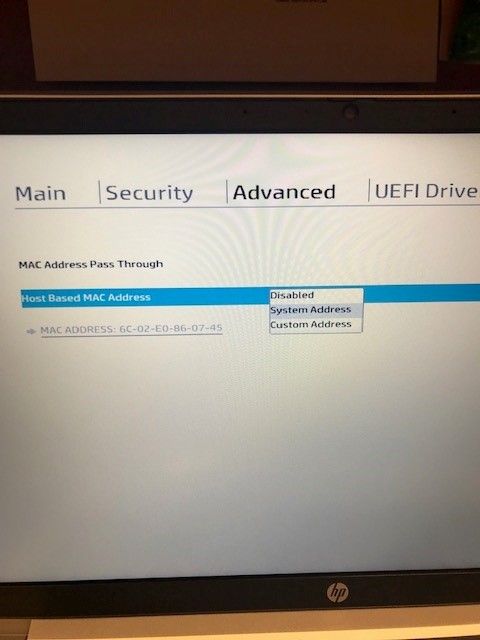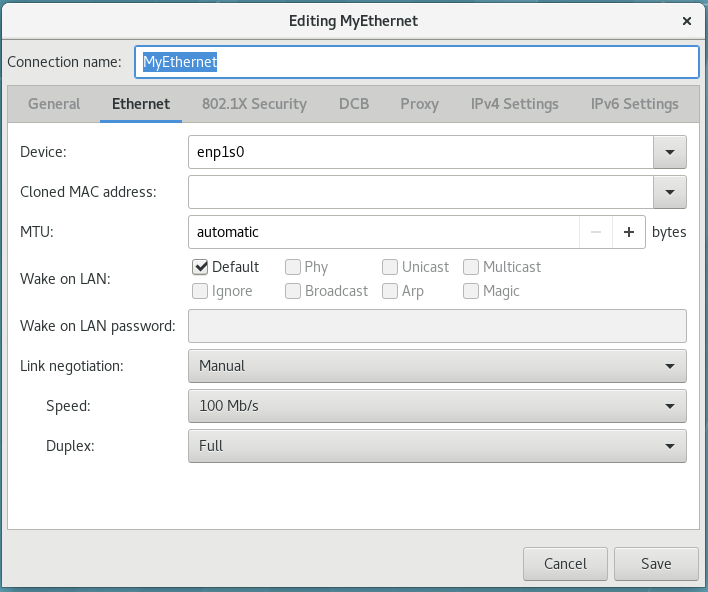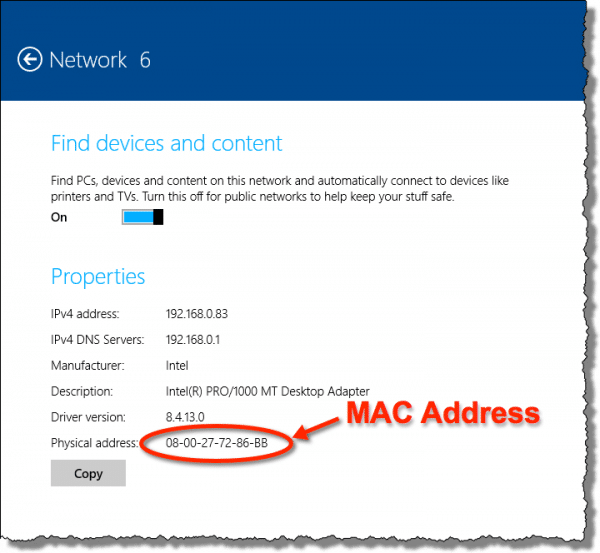

Or even better, using the bridge program that comes with recent versions of iproute2: # bridge link set dev eth0 hairpin on Or using a recent version of brctl: # brctl hairpin br0 eth0 on However it's worth mentioning that Linux's own internal bridge implementation does support hairpin mode in recent versions assuming eth0 is a port of br0, hairpin mode can be anabled by doing # echo 1 > /sys/class/net/br0/brif/eth0/hairpin_mode Since there are few switches supporting hairpin mode, VEPA mode isn't used all that much yet. This feature (the so-called "hairpin mode" or "reflective relay") isn't widely supported yet, which means that if using VEPA mode with an ordinary switch, inter-VM traffic leaves the hypervisor but never comes back (unless it's sent back at the IP level by a router somewhere, but then there's nothing special about that, it has always worked that way). However, at the same time this implies that, for VMs to be able to communicate, the external switch should send back inter-VM traffic to the hypervisor out of the same interface it was received from, something that is normally prevented from happening by STP. Since macvlans are almost always assigned to virtual machines or containers, this makes it possible to see and manage inter-VM traffic on a real external switch (whereas with normal bridging it would not leave the hypervisor), with all the features provided by a "real" switch. If the lower device receives data from a macvlan in VEPA mode, this data is always sent "out" to the upstream switch or bridge, even if it's destined for another macvlan in the same lower device. VEPA (Virtual Ethernet Port Aggregator) is the default mode.The main use of macvlan seems to be container virtualization (for example LXC guests can be configured to use a macvlan for their networking and the macvlan interface is moved to the container's namespace), but there are other scenarios, mostly very specific cases, like using virtual MAC addresses (see for example this keepalived feature).Ī macvlan interface can work in one of four modes, defined at creation time. The physical interface to which the macvlan is attached is often referred to as "the lower device" or "the upper device" here we'll use the term "lower device". Applications can then bind specifically to the IP address assigned to a macvlan interface, for example.

So with this it's possible to have multiple IP addresses, each with its own MAC address, on the same physical interface. Each macvlan interface has its own MAC address (different from that of the main interface) and can be assigned IP addresses just like a normal interface. Macvlan interfaces can be seen as subinterfaces of a main ethernet interface. Surely there's more to it (corrections and/or more information welcome). Here are some notes to summarize what I've been able to gather so far. If it is within the range, then it is possible to give the same address to another VM as the host does not control the management between static and dynamic addresses.There's not a lot of documentation about these interfaces. Set-VMNetworkAdapter -VMName SRV01 -StaticMacAddress “00112233445566”įinally, note that when you set up a static MAC address for a VM, be sure it is not within the dynamic address range generated by the Hyper-V host. This is done using the Set-VMNetworkAdapter cmdlet as you can view below. To set the VM with a static MAC address, enable the Static option and enter the address you want. Here, expand the Network Adapter and go to Advanced Features. Open Hyper-V Manager and then VM settings. Set static MAC address using Hyper-V Manager As always, this can be done either through Hyper-V Manager or PowerShell. Let’s see how we set a static MAC address to a VM in Hyper-V. Otherwise, if it had a dynamic address then it would get a new one.

In such a case, when we move the VM to another Hyper-V host, it must keep the same MAC address.
#Lom mac address vs passthrough mac address license
For example, when we want to do DHCP Filtering or DHCP Reservations, or if an inventory service or even some application’s license is linked to a MAC address. However, there are several cases that we need to have a static MAC address on a VM. I don’t want to repeat myself, I have written an article on this subject. In a Hyper-V host, the MAC addresses received by the VM’s network adapters are dynamic and are defined by the range of the host.


 0 kommentar(er)
0 kommentar(er)
